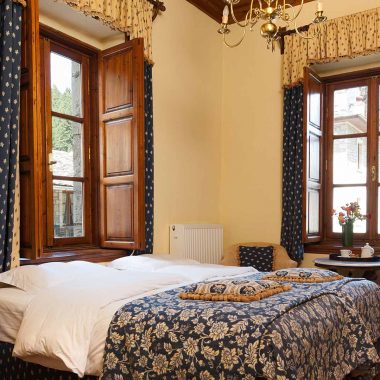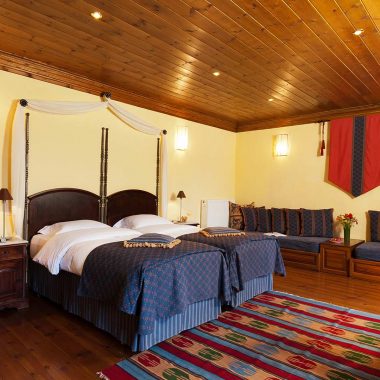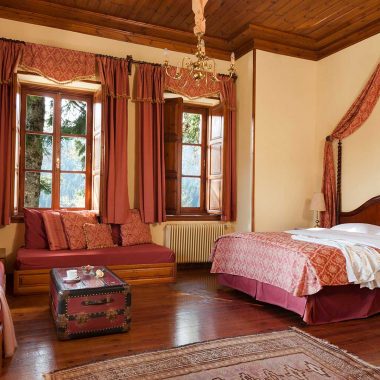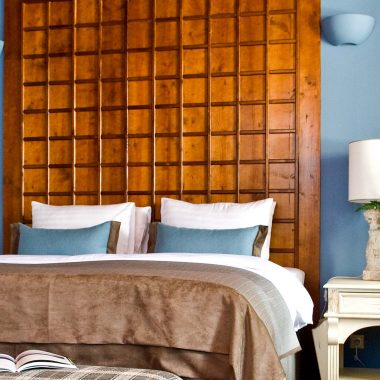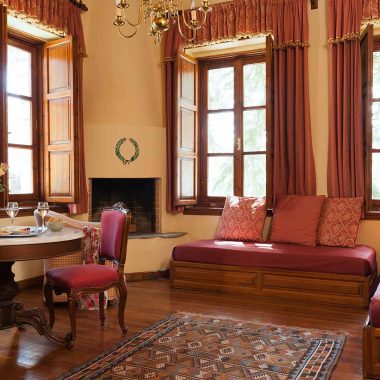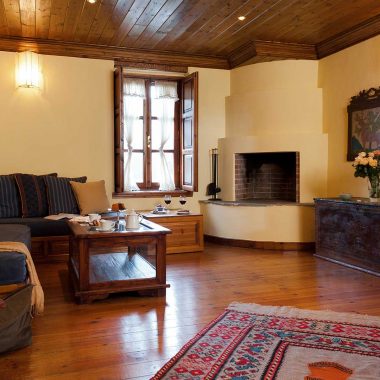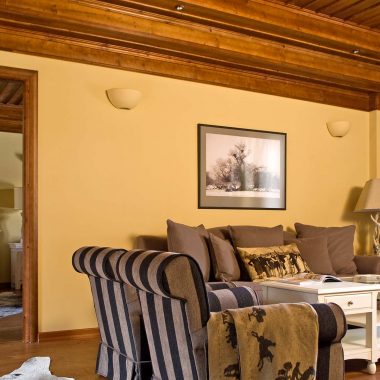history of the manor
history of the manor
Chatzigaki Manor is full of history, with family roots that go back to the 15th century, according to tradition, as well as to local sources from the period. During ensuing centuries up through the present, family members have played important roles in the political, social and spiritual life of the area.
The Manor
The construction of the Chatzigaki Manor, which was the family summer home, began in 1890 and was carried out by Swiss architects. Since then, the beautiful Pertouli village of southern Pindos of the Aspropotamos area, has been a point of reference for the family, honored by family members in different ways. As the scholar Alekos Chatzigakis mentions in his book Pertouli, my village“… up here, the light circulates calm and varied in all its manifestations. It caresses and permeates the human ‘being’, radiates in the eyes. Here, thought and inspiration find their most peaceful retreat…”
In 1892, the construction of the Manor was completed along with an adjacent tower, which was of similar grandeur–a watch tower built against military attacks and thieves.
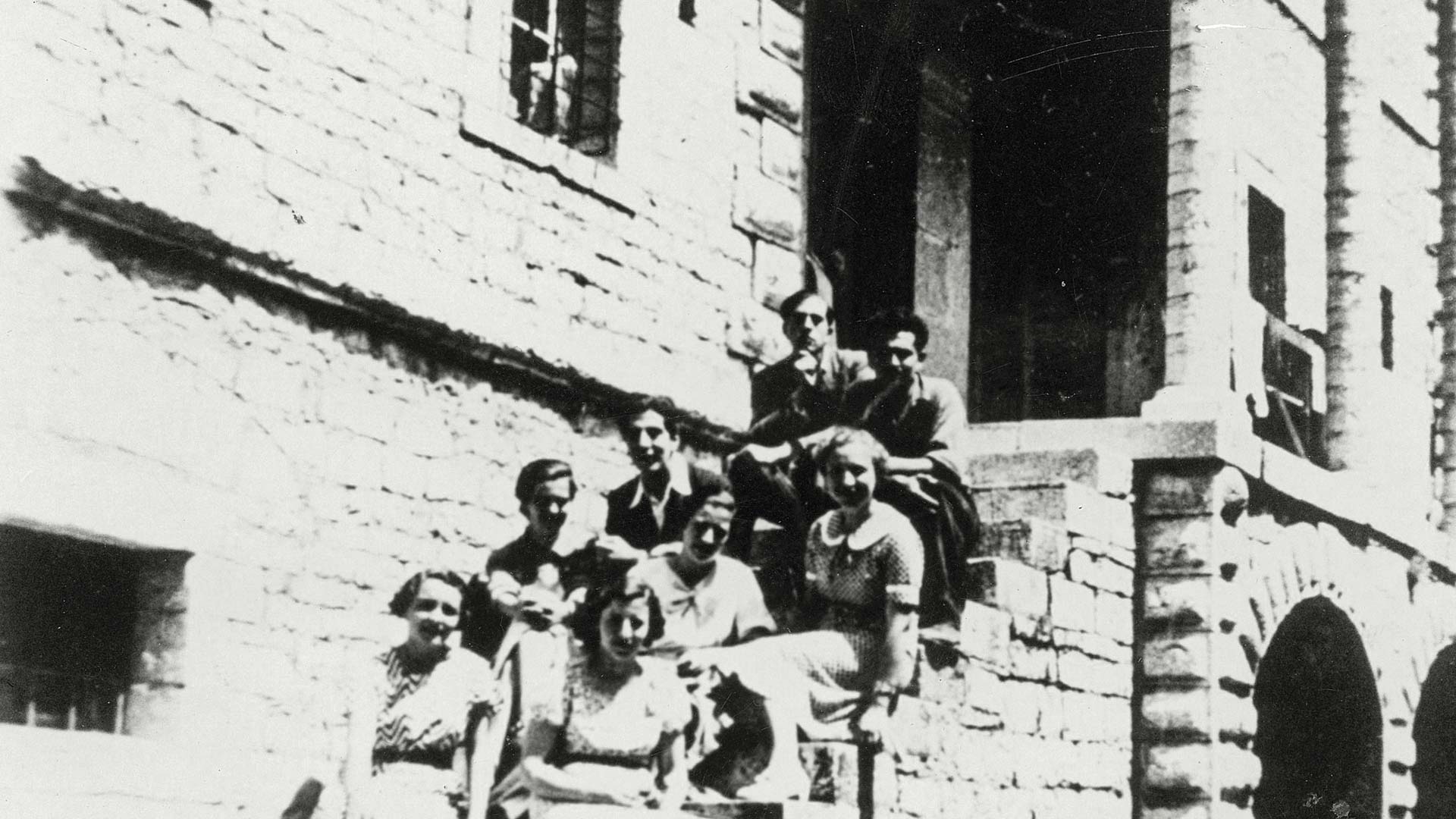
A small “palace”
The Manor, known to many as “the small palace”, had harmonious and symmetrical architectural proportions and advanced systems for its time, including a drainage system and an internal water supply system. Its premises were decorated with objects collected with love and passion from both Greece and abroad, where the owners traveled frequently: living-room furniture made of ivory and silverware from Asia, porcelain dinnerware from France, hand-woven textiles from Metsovo, carpets from the East, collections of jewelry and costumes of the time, precious household furniture and other items, musical instruments from Europe.
The majestic country house hosted members of the royal family, members of the Filiki Eteria (Society of Friends, a secret 19th-century organization whose purpose was to establish a Greek state), as well as prominent figures of the political social and cultural life of the era.
During the WWII, the Manor hosted the Joint General Guerrilla headquarters and the British Mission in Greece, and was, for that reason, burnt to the ground by the Nazis in 1943.
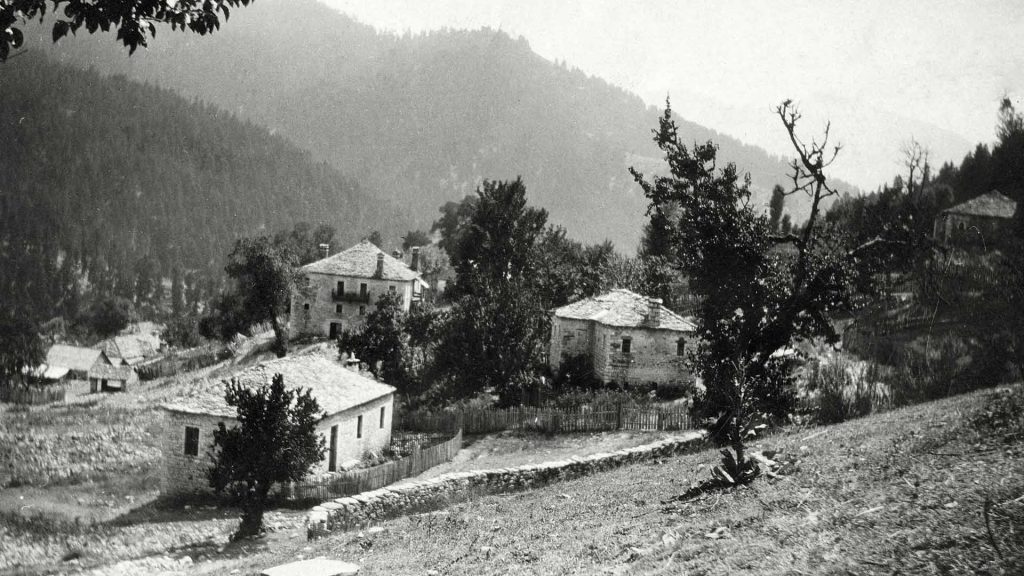
How it became a hotel
In 1993, the owner, civil engineer Dimitris Chatzigakis, influenced by the stories of the past, and with deep respect for the family tradition, decided to faithfully reconstruct the family tower, based on the few old photographs and testimonies of people who had lived in or visited the Mansion.
It took seven years of study and laborious effort to build a guesthouse consonant with high standards as well as respect for the environment, and one which honored the original architectural style—something that would please travelers who appreciate quality.
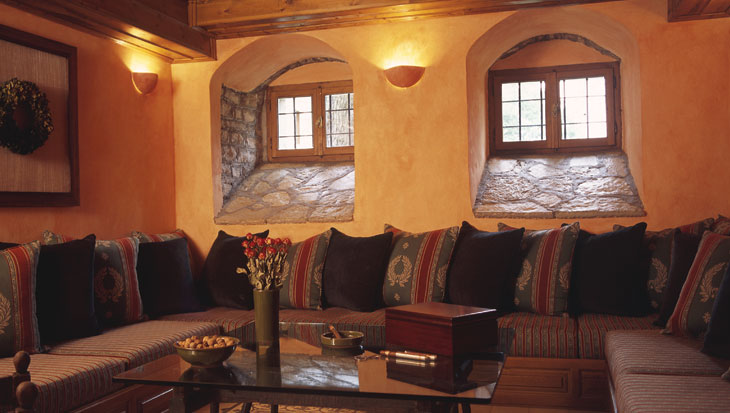
The Hotel's logo
What inspired its design
The hotel’s logo includes the historical symbols of the Chatzigakis family that were carved on the door of the main entrance to the old mansion:
The deer, symbol of Pertouli
The dove, symbol of peace
The four-leaf clover, symbol of the Filiki Eteria or Society of Friends,a secret 19th-century organization whose purpose was to overthrow the Ottoman rule of Greece and establish an independent Greek state.
The grape, symbol of hospitality
The cross, symbol of Christianity.
The circle, symbol of the unity of the Chatzigakis family
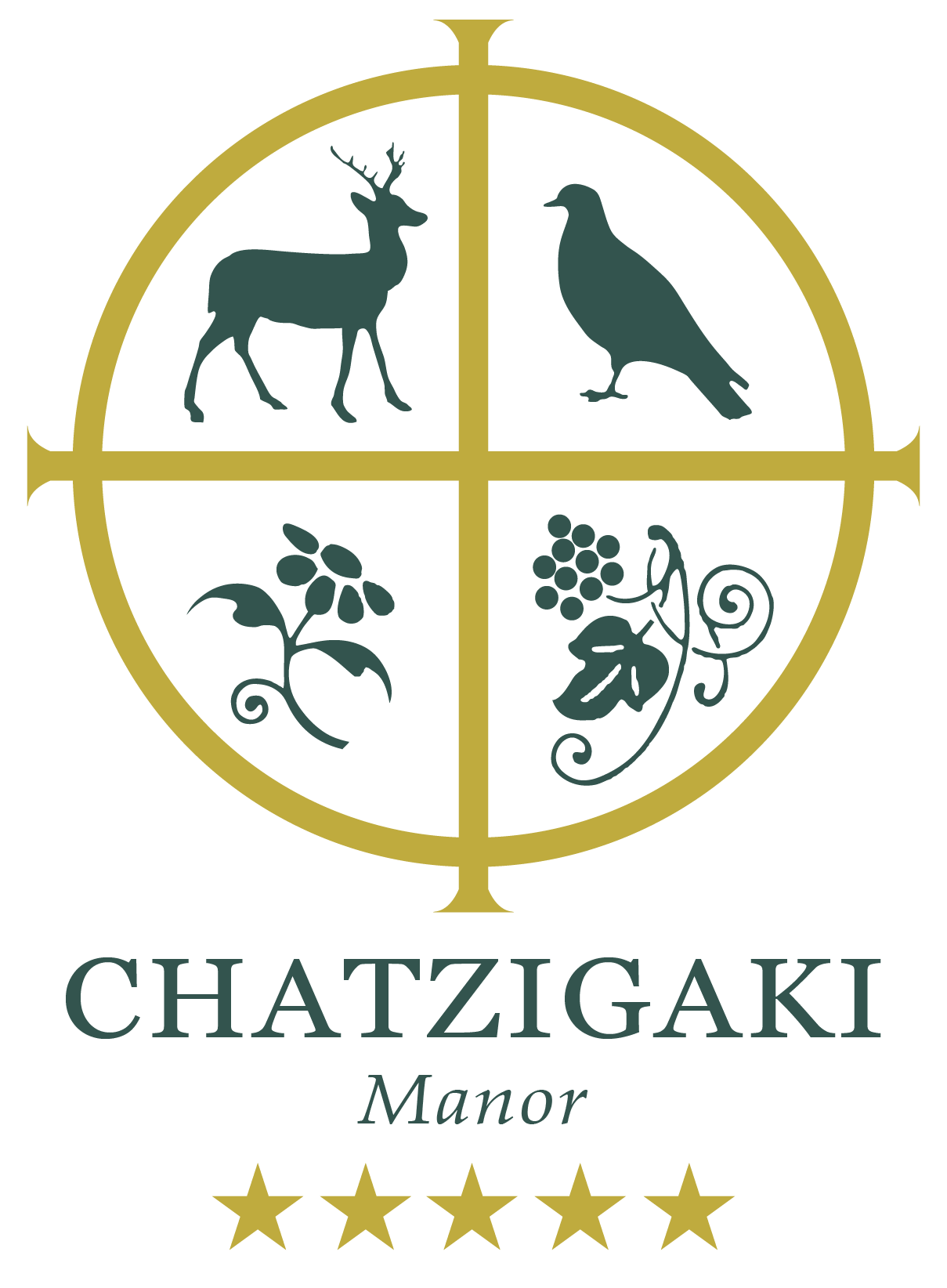
Thanks for having us in the beautiful Chatzigakis family castle. We felt at home in this historical place! We enjoyed the area and the beautiful nature. Thank you for your warm hospitality. It was wonderful!
Accommodation
subscribe to our newsletter
to receive exclusive offers and news from Chatzigaki Manor


